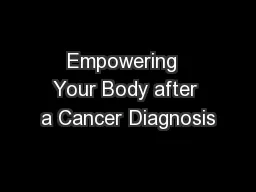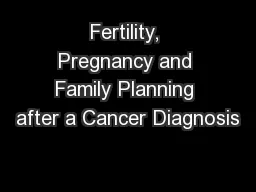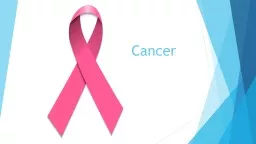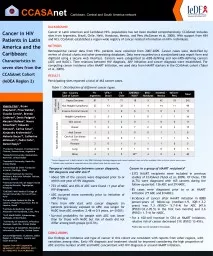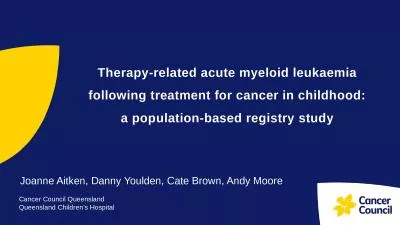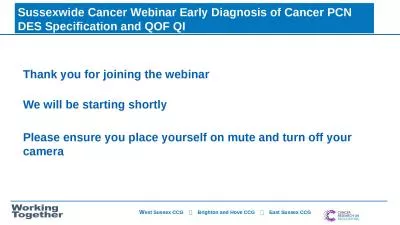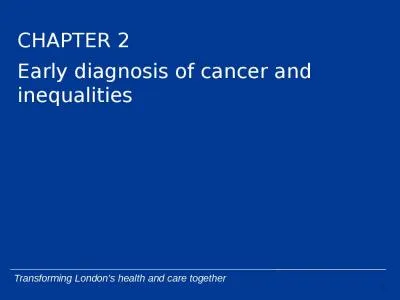PPT-Empowering Your Body after a Cancer Diagnosis
Author : karlyn-bohler | Published Date : 2018-10-07
Dr Rob Rutledge Oncologist Associate Professor of Medicine Empowering Your Body Main Points You can make a tremendous difference in your health and happiness
Presentation Embed Code
Download Presentation
Download Presentation The PPT/PDF document "Empowering Your Body after a Cancer Dia..." is the property of its rightful owner. Permission is granted to download and print the materials on this website for personal, non-commercial use only, and to display it on your personal computer provided you do not modify the materials and that you retain all copyright notices contained in the materials. By downloading content from our website, you accept the terms of this agreement.
Empowering Your Body after a Cancer Diagnosis: Transcript
Download Rules Of Document
"Empowering Your Body after a Cancer Diagnosis"The content belongs to its owner. You may download and print it for personal use, without modification, and keep all copyright notices. By downloading, you agree to these terms.
Related Documents

